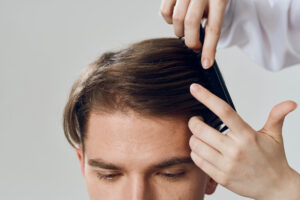Botox injections are best known for its amazing anti-aging abilities. But did you know that it can also treat some medical issues, such as an overactive bladder (OAB)? In 2013, The US Food and Drug Administration (FDA) approved the utilization of Botox for overactive bladder. Moreover, Botox injection is a recommended treatment for people who have undergone other treatments for overactive bladder yet hasn’t been successful.
What is an OAB?
Overactive Bladder (OAB) is not a disease but is a term used to call a combination of urinary symptoms. The most common symptom for this includes:
– The urge to urinate right away.
– Urinating many times during the day and night (At least eight times during the day, and more than twice at night)
– Frequently leaking urine
– Waking up at night to pass urine
How Can OAB Affect Your Life?
An overactive bladder can make your life miserable. For most people, since this symptom keeps on waking them up at night to go to the bathroom, it decreases the quality of sleep. It substantially enhances stress levels and decreases the quality of sleep.
Moreover, people with OAB must limit their liquid intake if they want to go too far away from the restroom. There’s a big chance that OAB can negatively impact both confidence and liberty in one easy step.
What Causes OAB?
An overactive bladder may be caused by one or even a combination of the following:
– Weak pelvic muscle
– Nerve damage
– Medications
– Too much alcohol or caffeine
– Infection
– Excess weight
– Estrogen deficiency after menopause
How BOTOX Works for OAB?
Botox contains neurotoxin that induces muscle paralysis to the part where it has been administered. When used for cosmetic purposes, it acts to temporarily disorient facial muscles so that wrinkles and fine lines would become less evident or even don’t develop at all.
When using Botox for OAB, the substance is injected into the bladder to prevent too much contraction. This makes it easier for the patient to go through her life without suffering the consequences of constantly needing to go to the restroom.
What to Expect Before the Treatment?
Before the treatment is done, the doctor will first explain how it is done. Next is that the doctor will advise you to stop drinking antiplatelets at least three days before the treatment. Lastly, the doctor will give you some antibiotics for 1 to 3 days before the treatment. The antibiotics are taken to help prevent urinary tract infections (UTI).
How is BOTOX Administered for OAB patients?
The Botox is administered to the muscles of the bladder. After the injection, the patient will have to wait for 30 minutes and will also need to urinate as well before he/she can leave the clinic. The waiting time enables the doctor to ensure that the patient’s body accepts the Botox without any complications. Fortunately, most of the people who got this treatment tolerate this nicely. Lastly, Botox injection is normally done inside your doctor’s clinic and it doesn’t take a long period of time.
Is It Painful?
The answer is no. They do not hurt as you would imagine, but you may feel a short-term pain and discomfort, which the people who experienced getting BOTOX treatment for their OAB said that it’s similar to a period cramp. In addition, most patients who get this treatment tolerate the pain and the injections without any worries.
How Long Before the Botox Takes Effect?
While most of the patients find that the way on how their bladder works changes right away, for some, it might take days or weeks. Patients who undergo Botox treatment for OAB will experience fewer leakage in as little as 2 weeks. However, the full result can be experienced within 12 weeks.
Is This Treatment Permanent?
Unfortunately, this treatment is only temporary. You’ll have to go back and get your injections in order to maintain its effects. To maintain the effects of this, the patient is required to have the injection every three months or so. Nevertheless, to keep you cozy, you can request to have light anesthesia throughout the entire injection process.
How Many Injections Will Be Done?
Normally, approximately 20 injections are made. Each injection will treat a small radius within the bladder. After treating a certain area in the bladder, the doctor will go on to the other area to give it some injection until the full treatment of the bladder has been achieved. Most of the patients find the way on how their bladder works changes right away.
Are There Any Side Effects?
The studies done for the treatment of OAB with the use of Botox showed that there are some side effects that come with it. A study done by the New England Journal of Medicine (NEJM) concluded that women who used Botox injections recorded a greater percentage of urinary tract infection (UTI) compared with those who used anticholinergic pills.
*Information in this article is not medical advice and may not be factually accurate. It is intended for entertainment purposes only. Consult with a physician before attempting any tips in this blog post and to get the most up to date factual data about any procedure or treatment.














